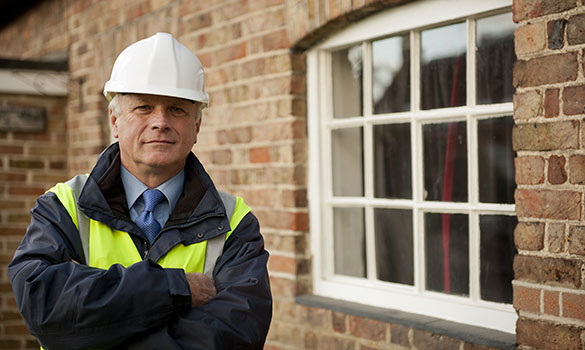Subsidence & Insurance Services
Structural Inspections


Root Cause Analysis
Our expert investigation service focuses on the root cause of the problem. Our engineers will inspect the property, reviewing all possible factors. We then investigate the likely cause by analysing a wide variety factors: the surrounding environment, the presence & proximity of trees, tree types & sizes, presence of retaining walls, topography of the ground, locations of drains, possible landfill sites nearby and importantly, the soil conditions.
Common root causes of subsidence are:
Retaining Wall Failure
Many retaining structures are not as robust as they should be. Although these often perform satisfactorily for many years inadequate walls can suddenly fail. This could be due to an increase in loading at the top of the wall, excavation undermining the base of the wall or a build-up of water pressure behind the retaining structure. Failure of the retaining structure often takes place quickly with the total collapse of the wall and the retained soil.
Shire investigated the collapse of retaining walls in domestic property, gardens, river banks and highway structures. Remedial schemes included conventional retaining structures, gabion walls, sheet piling and soil nails/anchors.
Land Slip
On moderate to steeply sloping sites there is a risk of the land “slipping” down the hill. This can be shallow movement of surface soils or a deeper-seated landslip. Landslips can cause serious damage to structures either on or adjacent to the landslip. Mass movement of this type of soil can be difficult and expensive to stop.
The first stage of any investigation is to establish the reason for the landslip. This normally includes topographical surveys, ground investigations, ground monitoring and monitoring the depth of ground movement using inclinometers. Once the position of the slip and the reason for the movement is established remediation schemes can be designed. This could include lowering the ground water level with drainage, re-profiling the ground or improving the resistance along the sip surface with soil nails.
Made up ground
Made up ground (also commonly called either fill or manmade ground) can be found where ground levels have been altered or features such as old quarries infilled. Where ground is made up in a controlled fashion using compacted layers it can have a good bearing capacity. Where ground levels are made up by simply infilling with soil excavated from elsewhere or waste materials the ground can have a low or variable bearing capacity. This can lead to a risk of both settlement and subsidence. These problems require careful investigation involving ground investigations and research of historical maps. Where terraced properties are built on this type of ground repairs need careful consideration to make sure that damage is not caused to adjacent properties.
Leaking Drains
Leaking drains are a common cause of subsidence where properties are supported on loose or granular materials. Where water escapes from the drain it can soften and/or wash away materials. If structures are supported on ground that has been either softened or washed away in this way it can result in foundation movement and damage to the building structure.
Leaking drains are investigated using CCTV cameras and by testing the strength of the soil adjacent to the leak. Where necessary drains can be repaired by replacement or lining, the bearing strength of the soils improved by treatment and if necessary the strength of the existing foundations improved.
Clay Shrinkage
Clay shrinkage is a common form of subsidence, particularly in the South East of the Country. Clays shrink as they are dried and expand as they rehydrate. This shrinkage causes the cracks that are often seen in lawns during the summer months. If structures are supported on clay soils that shrink in this way then the building will move with the clay often resulting in damage to the superstructure.
Normal seasonal variations in the ground moisture content can cause damage to structures built on fill or shallow foundations. Damage tends to be more common and more severe when moisture is extracted from clay by roots from trees or shrubs. Larger trees can extract moisture from many metres depth and this can result in significant movement and damage.
Tree Roots
Not only does the presence of tree roots have an affect on the moisture content of the soil, but the roots themselves can be invasive and undermine the strength of brickwork or foundations. We conduct root analysis as part of our geotechnical investigations. Once tree roots have been established as the cause of damage, we can offer a wide variety of root barrier treatments to prevent the growth of the roots while also analyzing the safety & protection of the tree itself.
